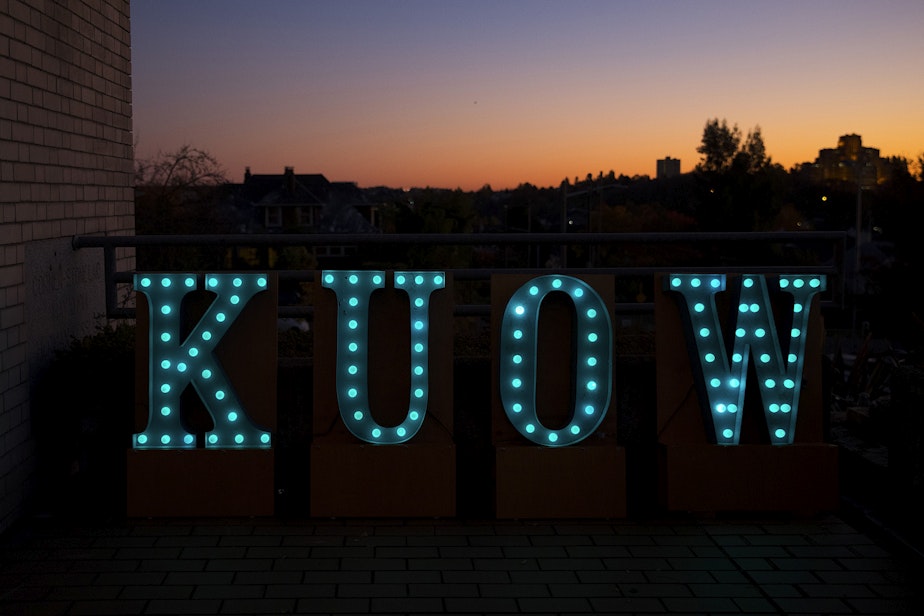KUOW lays off 8 staffers, ends RadioActive youth program

Seattle public radio station KUOW announced Tuesday that it would lay off eight members of its staff and cancel its award-winning RadioActive youth radio program.
The eight positions reflect 6% of the staff and include three full-time staffers for RadioActive, and five people on the business side of the station. Three open positions, including one in the newsroom, will not be filled this year.
This is the first time KUOW has laid off staff because of financial concerns, said Caryn Mathes, general manager and CEO of KUOW.
Mathes said leadership cut $1 million in operational spending. That left another $1 million to cull, which ultimately came from staffing positions.
“We did everything possible that we could before we got to people, because our people are a precious, precious resource,” Mathes said.
Sponsored
Revenue was flat, she said, but costs were going up, especially as KUOW has shifted to producing more podcasts and content for an “on-demand” audience.
“I feel like we’ve gone from a two-ring circus, with the live stream program and a website, to a 12-ring circus because of digital consumers,” Mathes said.
Adding to this, the primary broadcast audience gets older every year.
“The baby boomer audience was our bread and butter, and still are, money-wise in a lot of ways,” Mathes said. “They just wanted to turn on the firehose of content and have it wash over them.”
With costs rising, financial issues became apparent last year, so KUOW pivoted to a digital strategy, while asking its board to draw down $2.9 million from its $11 million reserves. The board agreed, but KUOW was not able to bridge the gap, Mathes said.
Sponsored
“We really felt like, maybe we can make this pivot in one year,” Mathes said. “We won't get to totally in the black within a year, but we can gradually step down the amounts of draw so that we don't burn down our whole savings account.”
Mathes said management made the cuts instead of asking the board to allow another draw, because she felt they wouldn’t have approved it.
Two of the people laid off were members of the SAG-AFTRA union, which represents the newsroom and content makers.
Clare McGrane, Seattle Now producer and one of the newsroom shop stewards, said she and the other shop stewards were “extremely disappointed.” McGrane said she believes management violated the contract because they did not notify the union about layoffs ahead of time so that, per the contract, “alternative proposals can be considered.”
"Management rebuffed not only union requests for meetings, but also cut a unique program in the country that trains young journalists, the vast majority of whom are from communities of color,” McGrane said.
Sponsored
Management in this case is University of Washington labor relations. KUOW employees are technically employed by the University of Washington although the station makes its own financial decisions.
KUOW management contends that Tuesday’s announcement is the notification because their last day is July 1.
Zaki Hamid, KUOW’s director of community engagement, oversaw RadioActive and shared his thoughts about the 20-year-old youth radio training program:
"RadioActive was a champion for youth voices in media. Throughout the years, youth tackled some of the thorniest issues, from abortion to religion to gender identity and so much more.
RadioActive gave us the privilege of insight into the world of young people, and their perspective on the world. The stories that they produced made us pause, rethink issues, laugh, and learn. I hope this program and all of the wonderful memories it created can act as a beacon of hope for youth to continue championing their voices being heard."
Sponsored
For McGrane, this marks a shift at KUOW, “from serving the community to being more corporate.”
For Mathes, it also represents a pivot – moving KUOW toward the digital future.
This move comes amid widely publicized turmoil in broadcast media, as companies across the country struggle to attract new revenue sources. Mathes believes the station is well positioned to take on challenges as a younger audience transitions to digital.


